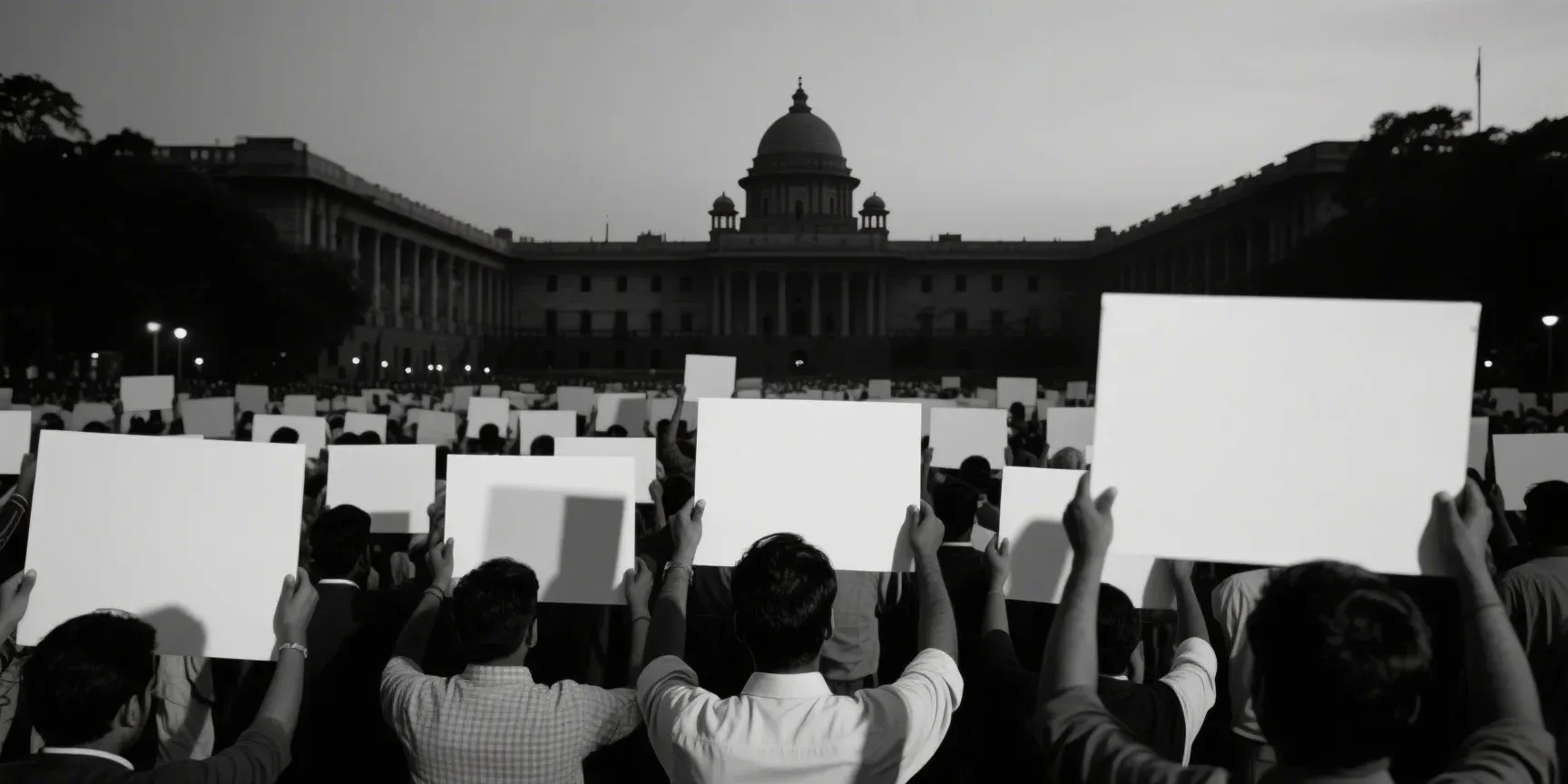
The Citizenship Amendment Act (CAA) of 2019: A Comprehensive Analysis
This in-depth analysis of the Citizenship Amendment Act (CAA), 2019, explores its controversial provisions, the fierce constitutional debate over equality and secularism, and the widespread societal and legal battles challenging the future of Indian citizenship.
The Citizenship Amendment Act (CAA), enacted by the Indian Parliament on December 11, 2019, introduced significant changes to the Citizenship Act of 1955. This amendment has since been at the center of a fervent national and international debate, sparking widespread protests and raising profound legal and constitutional questions. The law provides an accelerated pathway to Indian citizenship for specific religious minorities from the neighboring Islamic countries of Afghanistan, Bangladesh, and Pakistan. However, the exclusion of Muslims from its ambit has led to accusations of religious discrimination, challenging the secular fabric of the Indian Constitution.
This article provides a detailed examination of the CAA, exploring its historical context, key provisions, the arguments for and against it, the ensuing legal battles, its socio-political impact, and the international response.
1. The Legislative Journey and Historical Context of Indian Citizenship
To understand the CAA, it’s crucial to trace the evolution of citizenship laws in India. The concept of Indian citizenship came into being with the country’s independence in 1947. Prior to this, under British rule, individuals were considered British subjects. The partition of the subcontinent led to mass migrations, making the definition of citizenship a primary task for the newly independent nation.
The Constitution of India, in Articles 5 to 11, lays down the initial provisions for citizenship, identifying those who became citizens at the commencement of the Constitution on January 26, 1950. It empowered the Parliament to enact a comprehensive law on citizenship, which led to the formulation of the Citizenship Act, 1955.
Originally, the 1955 Act primarily based citizenship on the principle of jus soli (right of the soil), granting citizenship to almost everyone born in India. However, over the years, amendments have shifted the emphasis towards jus sanguinis (right of blood). A significant amendment in 1986 required that for a person born in India to be a citizen, at least one of their parents had to be an Indian citizen at the time of their birth. This was further tightened in 2003, with the introduction of the term “illegal migrant.” An “illegal migrant” is defined as a foreigner who enters India without valid documents or overstays their permitted time. The 2003 amendment explicitly barred illegal migrants from acquiring Indian citizenship.
The path to the CAA was laid in 2015 and 2016 when the government issued notifications exempting certain religious minorities (Hindus, Sikhs, Buddhists, Jains, Parsis, and Christians) from Pakistan and Bangladesh who had entered India on or before December 31, 2014, from being prosecuted as illegal immigrants. Afghanistan was later added to this list. The CAA, in essence, formalized and expanded upon these notifications.
2. Core Provisions of the Citizenship Amendment Act, 2019
The CAA introduced several key amendments to the Citizenship Act of 1955. The central change was the insertion of a proviso to Section 2(1)(b) of the 1955 Act, which redefines who is considered an “illegal migrant.”
Key Provisions:
- Exemption from being an “Illegal Migrant”: The Act stipulates that individuals belonging to Hindu, Sikh, Buddhist, Jain, Parsi, or Christian communities from Afghanistan, Bangladesh, or Pakistan, who entered India on or before December 31, 2014, will not be treated as “illegal migrants.” This effectively shields them from proceedings under the Foreigners Act, 1946, and the Passport (Entry into India) Act, 1920.
- Reduced Residency Requirement for Naturalization: For the specified communities from the three mentioned countries, the CAA reduces the residency requirement for obtaining citizenship by naturalization from 11 years to 5 years.
- Retrospective Effect: The Act grants citizenship to the eligible individuals from the date of their entry into India. This means any legal proceedings against them concerning their illegal migration or citizenship will be closed upon their acquisition of citizenship.
- Exceptions and Exclusions: The provisions of the CAA do not apply to the tribal areas of Assam, Meghalaya, Mizoram, and Tripura, which are included in the Sixth Schedule of the Constitution. It also exempts areas covered under the “Inner Line” permit system, which includes Arunachal Pradesh, Mizoram, Nagaland, and Manipur.
The rules for the implementation of the CAA were notified by the Ministry of Home Affairs on March 11, 2024. The process requires eligible individuals to submit an online application with documents proving their country of origin, religion, and date of entry into India. On May 15, 2024, the first set of citizenship certificates under the CAA were issued to 14 migrants.
3. The Government’s Rationale and Arguments in Support of the CAA
The Indian government and proponents of the CAA have put forward several arguments to justify the legislation:
- Humanitarian Grounds: The primary justification for the CAA is that it is a humanitarian gesture to protect religious minorities who have faced persecution in the neighboring Islamic states of Pakistan, Bangladesh, and Afghanistan. The government argues that these minorities have been compelled to seek shelter in India due to a fear of religious persecution.
- Civilizational Ethos: Supporters contend that India has a moral obligation and a long-standing tradition of providing refuge to those who are persecuted, and the CAA is in line with this civilizational ethos.
- Reasonable Classification: Proponents argue that the classification of individuals based on religion and country of origin is reasonable and has a rational nexus to the Act’s objective of protecting persecuted minorities. They maintain that the law does not violate Article 14 of the Constitution, which allows for reasonable classification.
- Addressing Historical Injustices: The government has also framed the CAA as a measure to address the historical injustices that arose from the partition of India.
- No Impact on Indian Citizens: The government has repeatedly asserted that the CAA does not affect the citizenship of any Indian citizen, including Indian Muslims, and is only meant to provide citizenship to certain foreign nationals.
4. Major Legal and Constitutional Challenges
The CAA has been met with a barrage of legal challenges, with over 200 petitions filed in the Supreme Court of India questioning its constitutional validity. The primary legal arguments against the Act are:
- Violation of Article 14 (Right to Equality): The most significant challenge to the CAA is that it violates Article 14 of the Constitution, which guarantees equality before the law and equal protection of the laws to all “persons,” not just citizens. Critics argue that by making religion a criterion for citizenship and by excluding Muslims, the Act engages in impermissible discrimination. They contend that the classification of countries and religions is arbitrary and lacks a “rational nexus” to the stated objective of protecting all persecuted minorities. For instance, the Act excludes other persecuted minority groups from the specified countries, such as Ahmadiyyas and Shias, and also excludes persecuted minorities from other neighboring countries like the Rohingyas from Myanmar and Tamils from Sri Lanka.
- Violation of Secularism, a Basic Structure of the Constitution: Opponents argue that the CAA fundamentally undermines the secular fabric of the Indian Constitution, which has been declared a “basic structure” by the Supreme Court. By introducing a religious test for citizenship, the Act is seen as a departure from the principle of state neutrality towards all religions.
- Arbitrariness and Violation of Article 21 (Right to Life and Personal Liberty): Drawing on the expanded interpretation of fundamental rights, critics argue that the CAA is manifestly arbitrary and violates the principles of fairness and reasonableness, which are considered essential components of Articles 14 and 21.
- Contradiction with the Assam Accord: In the context of Assam, the CAA is seen as a violation of the 1985 Assam Accord, which set March 24, 1971, as the cut-off date for detecting and deporting illegal immigrants, irrespective of their religion.
The Supreme Court is yet to deliver a final verdict on the constitutionality of the CAA.
5. The Contentious Link with the National Register of Citizens (NRC)
A significant part of the controversy surrounding the CAA stems from its perceived connection to the National Register of Citizens (NRC). The NRC is a proposed register of all legal citizens of India, the creation of which was mandated by a 2003 amendment to the Citizenship Act. Its stated purpose is to identify and deport illegal immigrants.
While the government has stated that there is no link between the CAA and the NRC, critics and protestors fear that a nationwide NRC, in conjunction with the CAA, could be used to disenfranchise Indian Muslims. The apprehension is that during a nationwide NRC process, individuals who are unable to produce the required documents to prove their citizenship could be deemed “illegal migrants.” In such a scenario, non-Muslims who are excluded from the NRC could potentially use the CAA as a backdoor to regain citizenship, while Muslims who are excluded would not have this option and could face statelessness.
The only state where the NRC has been implemented so far is Assam, where it left nearly two million people off the final list, including both Hindus and Muslims. The BJP has declared its intention to implement the NRC nationwide, though no concrete steps have been taken yet.
6. Widespread Protests and Socio-Political Impact
The passage of the CAA in December 2019 triggered widespread protests across India, some of the largest the country has seen in recent decades. The demonstrations were diverse, involving students, civil society groups, political parties, and ordinary citizens.
Key aspects of the protests and their impact include:
- Diverse Motivations: While in many parts of India, the protests were against the law’s perceived discriminatory nature and its potential impact on Muslims, in the northeastern states, particularly Assam, the opposition was rooted in concerns about the law legitimizing the citizenship of any foreign national, thereby threatening the region’s demographic and cultural identity.
- Prominent Protest Sites: The protests saw the emergence of significant sites of resistance, most notably the women-led sit-in at Shaheen Bagh in Delhi, which became a symbol of the anti-CAA movement.
- Communal Tensions and Violence: The protests and the charged political atmosphere led to a rise in communal tensions and, in some instances, violence.
- Government Response: The government’s response to the protests was often heavy-handed, with reports of police brutality and the use of force against demonstrators.
- Political Polarization: The CAA has deepened political polarization in India, with sharp divisions between those who support the law and those who oppose it. Opposition-ruled states declared that they would not implement the Act, though the Union Home Ministry stated that states lack the legal power to do so.
7. International Response and Criticism
The Citizenship Amendment Act has drawn significant attention and criticism from the international community.
- United Nations: The UN High Commissioner for Human Rights expressed concern that the law is “fundamentally discriminatory in nature” and called it a “breach of India’s international human rights obligations.”
- United States: The U.S. Commission on International Religious Freedom (USCIRF) described the Act as a “dangerous turn in the wrong direction” and suggested that the U.S. government should consider sanctions against Indian officials.
- Islamic Countries: The Organisation of Islamic Cooperation (OIC) expressed its concern over the law’s potential discrimination against Indian Muslims.
- Neighboring Countries: The governments of Pakistan and Bangladesh have officially condemned the CAA. Sri Lanka and Nepal have also expressed concerns about the implications of the law.
- Human Rights Organizations: International human rights organizations like Human Rights Watch and Amnesty International have strongly criticized the CAA as discriminatory and a violation of international human rights law. They have highlighted the law’s exclusion of Muslims and other persecuted groups.
The Indian government has consistently maintained that the CAA is an internal matter and has defended the law as a humanitarian measure.
8. The Road Ahead: Unresolved Questions and an Uncertain Future
The future of the Citizenship Amendment Act remains uncertain, with its constitutional validity hanging in the balance before the Supreme Court. The implementation of the Act, which began in March 2024, is proceeding amidst ongoing legal and political contestation.
The CAA has brought to the fore fundamental questions about the nature of Indian citizenship, the meaning of secularism, and the rights of minorities. The debates surrounding the Act are not merely legal or political; they touch upon the very idea of India and its constitutional values. The final judicial determination on the CAA will have far-reaching implications for the country’s legal landscape and its socio-political fabric. The coming years will be crucial in determining how these complex and contentious issues are resolved and what they mean for the future of Indian democracy.


